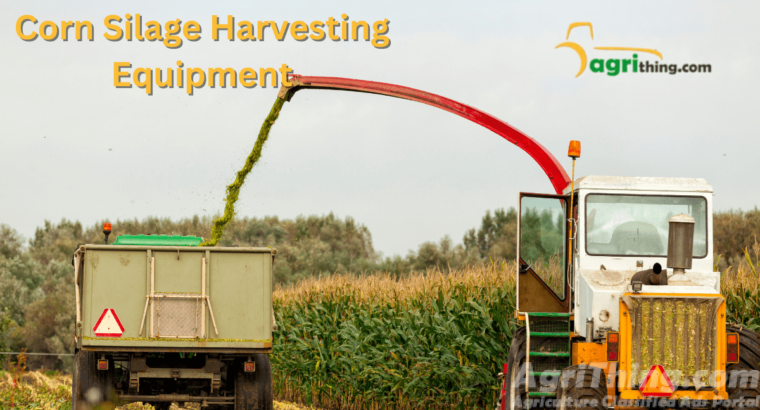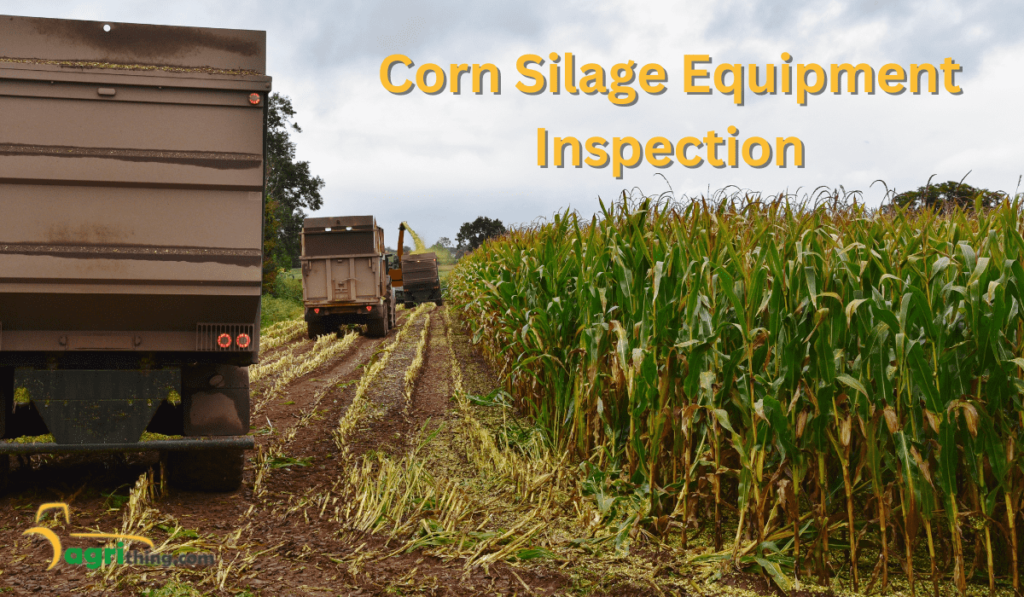Unleash Corn Silage Equipment: Farming Success

Corn silage is a valuable feed source for livestock, providing a nutrient-rich and easily digestible option for farmers. However, to ensure optimal quality and efficiency, it is essential to have the right equipment for harvesting Maize silage. This article will explore the must-have tools that can greatly enhance the corn silage equipment harvesting process, leading to improved yields and overall farm productivity.
Table of Contents
Importance of Corn Silage Harvesting
Efficient corn silage harvesting plays a crucial role in ensuring a successful and profitable operation for farmers. Properly harvested and stored cornage silage retains its nutritional value, which is essential for maintaining animal health and productivity. Additionally, effective harvesting allows farmers to optimize their crop yield, reducing waste and maximizing the return on investment.
Factors to Consider in Harvesting Corn Silage
Harvesting corn silage requires careful consideration of several factors to achieve optimal results. These factors include the moisture content of the plants, maturity stage, weather conditions, and equipment selection. Farmers should aim to harvest corn plants at the right moisture level, typically between 60% and 70%, to ensure proper fermentation and preservation of nutrients. The maturity stage of the corn silage equipment plants is also crucial, as harvesting too early or too late can affect both yield and quality.
The Best Corn Silage Cutter for Efficient Harvesting
Determine your requirements: Assess your specific needs, such as the size of your operation, available budget, and the amount of cornage silage you plan to harvest. This will help you narrow down your options.
.Research reputable brands: Look for well-known brands with a high reputation for manufacturing high-quality cornage silage cutters. Read customer reviews and gather information about their products.


Choose the Right Silage Baler for Efficient Harvesting
Assess the baling mechanism: The baling mechanism is crucial for efficient harvesting. Look for features such as adjustable bale density, an efficient wrapping system, and ease of bale ejection. A baler with a reliable baling mechanism ensures well-formed bales and smooth operation.
Check for ease of use and maintenance: Consider the silage baler’s user-friendliness and maintenance requirements. Look for features like easy adjustments, intuitive controls, and accessible maintenance points. A machine that is easy to operate and maintain will save you time and effort during harvesting
Enhance Harvest Efficiency with Forage Harvester
Choose the right forage harvester: Research and select a forage harvester suitable for your specific needs. Consider factors such as the size of your operation, the type of crops you harvest, and your budget. Look for a reputable brand known for manufacturing high-quality forage harvesters
. Optimize field management practices: Efficient forage harvesting is not just about the harvester itself but also overall field management. Implement practices such as proper crop rotation, timely planting, and appropriate fertilization to promote healthy and abundant crop growth. Well-managed fields will result in better-quality forage and easier harvesting.
Optimize Efficiency with a Corn Silage Kernel Processor
Maintain the kernel processor: Proper kernel processor maintenance is essential for optimal efficiency. Regularly clean the rolls, remove any debris or buildup, and inspect for wear or damage. Keep the processor well-lubricated and follow the manufacturer’s maintenance recommendations to ensure smooth operation.
Monitor kernel processing effectiveness: Regularly monitor the effectiveness of kernel processing by inspecting the processed cornage silage.
Maintain Efficiency: Crop Moisture Sensors
Install crop moisture sensors: Install crop moisture sensors at appropriate locations on your harvesting equipment, such as forage harvesters or balers. Ensure the sensors are properly connected and calibrated according to the manufacturer’s instructions.
Make adjustments as needed: Based on the information provided by the crop moisture sensors, make necessary adjustments to the harvesting process.
Achieve Efficiency: Inoculant Applicators
Select a suitable inoculant applicator: Choose an applicator specifically designed for the type of inoculant you will use. Consider factors such as applicator capacity, ease of use, and compatibility with your harvesting equipment.
Apply the inoculant efficiently: During the harvesting process, apply the inoculant evenly and at the correct application rate using a calibrated applicator. Pay attention to the applicator speed and coverage, treating the harvested crop effectively for improved fermentation and preservation.
Blade Sharpening Guide for Corn Silage Harvesters
Sharpen the blades: Use an effective tool, such as a grinder or file, to smooth the blade edges. Follow the original bevel angle and ensure even sharpening along the blade length.
Reinstall the blades: Once the blades are sharpened, carefully reinstall them back onto the maize silage harvester, ensuring they are properly secured and aligned. Ensure all safety precautions are followed during the reinstallation process.
Essential Maintenance: Corn Silage Equipment
Clean the equipment: Thoroughly clean all components of the cornage silage equipment, including the harvester, baler, kernel processor, and storage units. Remove any debris, crop residue, or buildup that could affect performance or corrosion.
Lubricate moving parts: Apply appropriate lubrication to corn silage equipment moving parts, such as chains, gears, and bearings. Refer to the manufacturer’s recommendations for the correct type and amount of lubricant to use.
Proper Greasing Techniques for Cornage Silage Equipment
Locate grease fittings: Identify grease fittings on corn silage equipment, such as bearings, pivot points, and moving parts. Refer to the equipment manual or consult the manufacturer for the precise locations of grease fittings.
Clean the fittings: Before greasing, clean the grease fittings and surrounding areas to remove any dirt, debris, or old grease. This ensures proper lubrication and prevents contamination.


Corn Silage Equipment Inspection Guide
Visual inspection: Thoroughly inspect all components for signs of wear, damage, or loose connections. Check belts, blades, bearings, and hydraulic systems.
Functional check: Test the equipment’s functionality through a simulated operation. Ensure all moving parts are operating smoothly and check controls and safety features
Conclusion
Efficiently harvesting cornage silage is crucial to getting the most crops, keeping nutrients, and making the farm more productive. Farmers can achieve this by using good corn silage equipment, taking care of it, managing the fields well, and using new technology. Doing these things will help them have better harvests and make more money.
Frequently Asked Questions (FAQ’s)
Q How often should I monitor the moisture content of corn plants during harvest?
A: It is recommended to monitor the moisture content at least twice daily during the harvest period to determine the optimal time for harvesting.
Q: Can I use cornage silage as a feed for horses?
A: Corn silage is not typically recommended for feeding horses due to its high energy content. Horses have different nutritional requirements, and alternative forage options are more suitable for them.
Q: Is it necessary to use silage covers when storing cornage silage?
A: Yes, silage covers are essential to protect the stored silage from air, sunlight, and moisture, ensuring its quality and nutritional value are preserved.
Q: What is the role of a kernel processor in maize silage harvesting?
A kernel processor crushes the corn kernels, improving digestibility for livestock and enhancing the nutritional value of the silage.
Q: Can I use corn silage for other livestock besides cattle?
A Yes, cornage silage can be used as a feed option for various ruminant animals, including dairy cattle, beef cattle, sheep, and goats. However, specific nutritional considerations may vary for different species.
Related Articles
Looking to enhance your knowledge about silage? Explore our informative blog posts on the topic.
Want to purchase top-quality silage machinery? Visit our Agricomplex website to explore our wide range of silage products.
People Also Asked
What is corn silage harvesting?
Maize silage harvesting is the process of cutting and ensiling corn plants to create high-quality feed for livestock. It involves chopping the entire plant, including the stalks and ears, and storing it in a silo or bunker to undergo fermentation. This results in a nutrient-rich feed source that can be stored and fed to animals throughout the year.
Can I use regular farm machinery for corn silage harvesting?
Yes, regular farm machinery such as forage harvesters, tractors, and trailers can be used for cornage silage harvesting.
What are some common challenges in cornage silage harvesting?
Some common challenges in maize silage harvesting include adverse weather conditions, such as wet or dry periods, which can affect the optimal moisture content of the crop. Timing the harvest when corn plants reach the ideal maturity stage can be challenging
Are there any safety considerations when using corn silage harvesting equipment?
Yes, there are several safety considerations when using cornage silage harvesting equipment. Operators should be properly trained in equipment operation and safety procedures. Hazards include moving parts, potential for entanglement, and risk of falls or accidents during equipment maintenance
What are the benefits of using specialized corn silage equipment for cornage silage harvesting?
Using specialized equipment for cornage silage equipment for harvesting offers several benefits. It improves efficiency and productivity by reducing harvesting time and labor requirements. Specialized equipment is designed to handle the unique challenges of silage harvesting, resulting in higher-quality silage with improved nutrient retention




Leave your comment